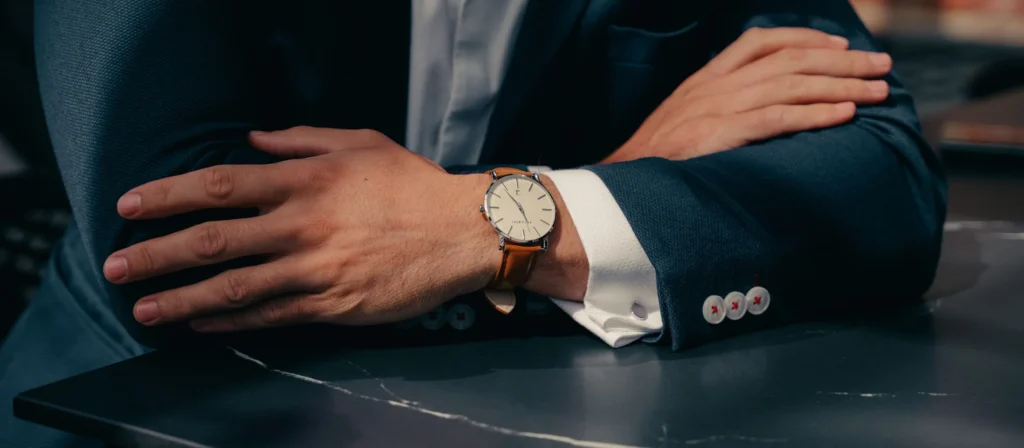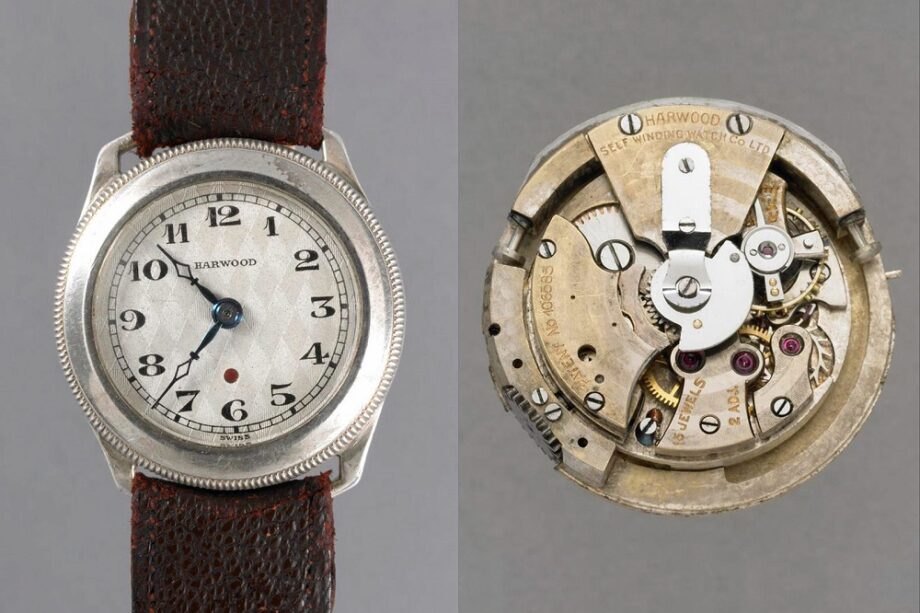Who thought of strapping a timepiece to your wrist, anyway? You might not give your wristwatch a second thought. And that’s fine. Since these devices are so commonplace, we take them for granted. But what many people don’t realise is that the wristwatch has an interesting history marked by a who’s who of the aristocracy, soldiers and inventors, as well as members of the royal family.
Let’s take a deep dive into the history of the wristwatch and alight on where it came from and how it changed our lifestyle.
What Is a Wristwatch, and Why Does It Matter?
Dozens of slits were cut around the outside of the ring, and a string was threaded through the resulting eyebrow, to not only hold the ring in place, but to suspend anything else that might dangle from it. The wristwatch remained a status symbol for another few centuries, as much by its usefulness (what could be more practical than keeping track of time?) as by as many people could afford a a gold watch).
The wristwatch was on symbol of on-time punctuality, professionalism – and, in the case of the aristocracy, taking pride of place on the wrist. From the reading ring to Breitling Navi timers the wristwatch had arrived. But where did it all begin? Wind back the clock.
The Early Days: Timepieces Before the Wristwatch
We had sundials and water clocks and hourglasses. They were perfectly precise, as far as those days could tell, but they were not exactly portable. It was the mechanical clock from the 13th century that made the wristwatch more of a reality.
Pocket Watches – The Wristwatch’s Predecessor
Already by the 16th century, pocket watches, hand carried in a pocket on a chain, were de rigueur for wealthy European men, until they became unwieldy to pull out each time one wanted the time. Out of convenience grew the forerunner to the wristwatch.
Enter Queen Elizabeth I: A Royal Gift with a Twist
The earliest known written reference to a timepiece worn on the wrist dates from 1571, when Queen Elizabeth I of England received a tiny ‘arm watch’ from her suitor, Robert Dudley. This was not a wristwatch as we would recognise the term – rather, it was a purely decorative bracelet containing a clock – but it looked ahead to the future dominance of the wrist as a site for human timekeeping.
The Role of Patek Philippe – The First True Wristwatch?
Jumping forward to the 19th century, one of the first and certainly the most famous of these companies for what we might think of as the first true wristwatch that was developed for actual usage is Patek Philippe, whose 1868 wristwatch for the Countess Koscowicz of Hungary was conceived as a ladies’ accessory but had all the markings of what would become known as the wristwatch – strap, portability, mechanical timekeeping.
Women’s Accessory or Practical Tool? Early Perceptions of the Wristwatch
Most wristwatches until the middle of the 19th century were made as feminine jewellery. Men – who generally toted around large fob watches until the 1950s or ‘60s – viewed wristwatches as a distinctly female accessory. The advent of war changed all of that.

The Boon of War: Wristwatches Take Center Stage in Combat
Wristwatches really came into their own out on the battlefront. During the Second Boer War (1899–1902), British soldiers began strapping their pocket watches to their wrists with leather straps. Both hands were needed for weapons, but constantly fishing around in a pocket for an old-school pocketwatch? No way.
How World War I Made the Wristwatch Popular for Men
Wristwatches finally had their moment with the advent of the First World War. With troops needing to be co‑ordinated and movements synched to the second, generals and fighting men alike started wearing wristwatches. When the soldiers came home, they kept on wearing their timepieces and, all of a sudden, wristwatches didn’t look so gay after all.
Role of Innovation: The Shift from Mechanical to Quartz Watches
It wasn’t until the mid-20th century that wristwatch technology was really transformed, however, with the invention of the quartz movement. Quartz watches – first powered by the electric vibrations of a crystal instead of a spring in the 1960s – were significantly more accurate than their mechanical predecessors, leading to a boom in affordable wristwatches in the 1970s known as the Quartz Crisis.
The 20th Century Boom – From Status Symbol to Everyday Necessity
Thus as more brands such as Seiko and Casio entered the marketplace, driven by clear needs created by the pervasive use of pocket watches in the natural and social environment, a reliable wristwatch became ubiquitous. It was no longer viewed as something expensive and desirable for certain social classes, but had become a commodity. Suddenly school children, librarians and JP Morgan alike owned watches.
The Swiss Legacy: Why Switzerland Became Synonymous with Watches
Certainly there is only one place on Earth associated with producing the very highest quality timepieces. It is a commonplace that watchmaking is a quintessentially Swiss occupation, with many of the world’s most famous brands originating from the Alpine nation. So how did Switzerland get there? Partly it’s a matter of precision craftsmanship and technique. The big brands (Rolex, Omega and TAG Heuer, for example) developed a reputation for quality that could not be easily matched elsewhere.
Role of Fashion in Shaping the Modern Wristwatch
As such, it became less a functional device than an object whose value lay in its appearance. As Cartier, Breitling and others started to design watches – not necessarily with technical improvements – they appealed to customers who wanted their watch to be a fashion statement.
The Rise of Smartwatches: Are Traditional Watches Still Relevant?
Now we arrive into the 21st century – smartwatches! Apple Watches and Garmin synchronise your heart rate with your text messages; could the traditional wristwatch be about to become a relic?
Gabriel remembers receiving a gift of a beautiful analogue watch from his grandfather. ‘It was black, thick, and really well built, and it had lots of history and sentiment attached to it. When I received it, it became the watch I was always going to wear. ‘There was something really spiritual about it,’ he points out. ‘It came with a whole lifetime attached.’ I ask if a smartwatch attached to his smartphone could ever take the place of it.
Could its pristine, crystal-clear and heart-rate measuring, trend-line-charting, voice-command receiving power, potentially even enabled with a watch-and-phone detection feature, ever usurp that offline warmth? To which Gabriel smiles wisely: ‘I don’t think a smartwatch will ever be as cool or deep as a truly great, beautiful watch.’
Wrist watches as Collectibles: A New Era of Luxury and Prestige
Wristwatches, too, have seen something of a renaissance in recent years. Vintage pieces by Patek Philippe and Rolex sell for millions at auction, making them popular investment vehicles that belie the practicality of their original purpose.
Also Read: – Top 10 first copy brands online shopping Website in India
The Lasting Legacy: Why the Wristwatch Endures Today
Then again, who did invent the wristwatch? There’s arguably no one inventor, and a number gift of a pocket watch to a monarch; to the need to quickly tell the time on the battlefield – came into play. In other words, the wristwatch went from a piece of woman’s jewellery to a weapon, a fad and a fashion statement, to the now-literally wearable technology.
As long as we live in a world that needs a strap for a watch, the piece of hardware, attached to your wrist like a timepiece cleat, will continue to call out to our heads, and to our hearts.
We don’t need lectures about the fast-changing, digital world we live in. But as long as we care about the passage of time, a watch will remind you that ‘digital’ long predated any screen. Wear one because it does what you need it to do, or because it says something about you, or because it makes you feel good. Wear one because you like it or because you love it.
Wear a watch because it makes a statement about how slowly you want to bend with age. And remember, as you do so: you can take it off, but try not to break the strap. Maybe, someday, in another century or so, watch aficionados will still be talking about the need to – or the desire to – wear time on their wrists and the meaning behind such strappings.

